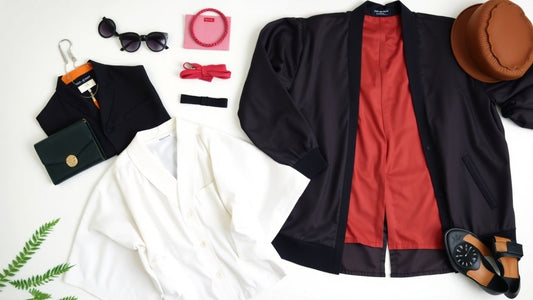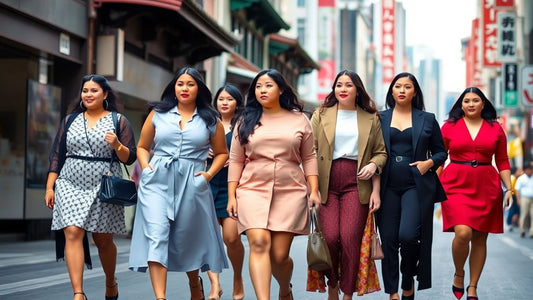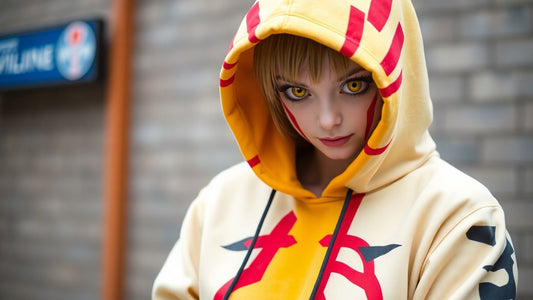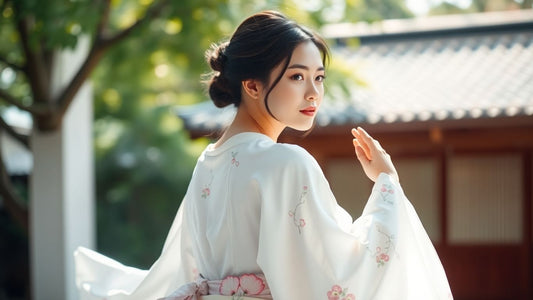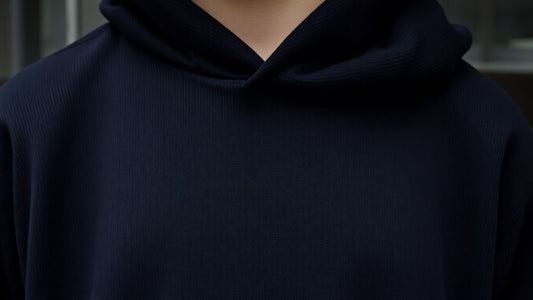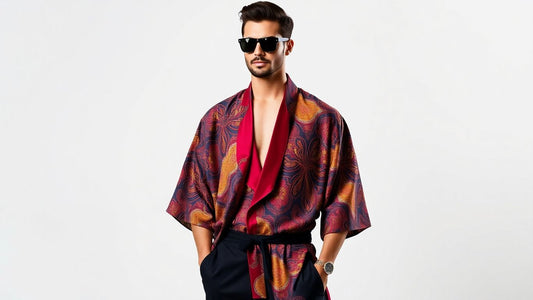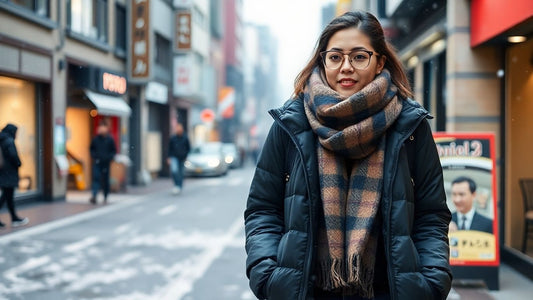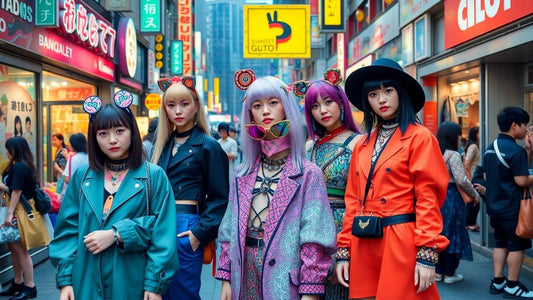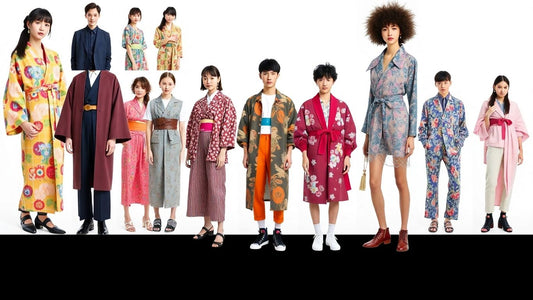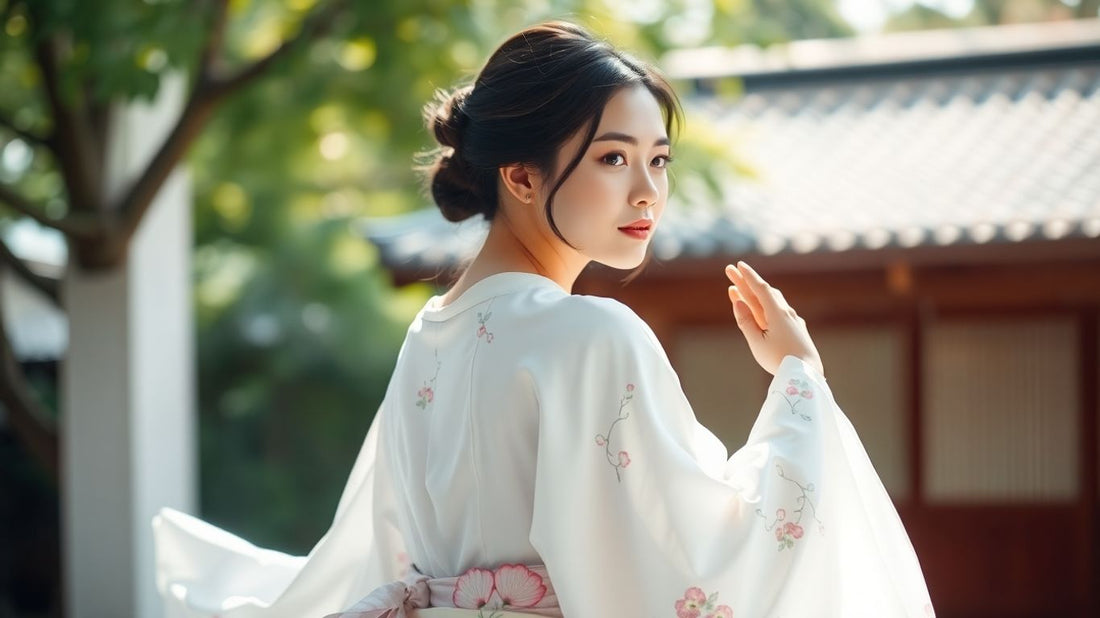
Discover Elegance: The Timeless Appeal of the Japanese White Kimono
The Japanese white kimono is more than just clothing; it's a symbol of purity, simplicity, and a deep connection to tradition. This elegant garment has a history stretching back centuries, evolving through different eras while maintaining its iconic status. From its origins to its significance in modern life, the white kimono offers a unique window into Japanese culture and artistry. Let's explore the enduring appeal of this beautiful piece of traditional wear.
Key Takeaways
- The Japanese white kimono traditionally symbolizes purity, simplicity, and is often worn during significant life events like weddings.
- Craftsmanship in kimono making involves generations of refined artistry, preserving time-honored techniques like weaving and dyeing.
- Motifs and colors on kimonos carry deep cultural meanings, with nature's elements and auspicious symbols frequently depicted.
- The kimono's style has evolved from its origins in the Heian period through periods of flourishing and adaptation to Western influences.
- Different kimono styles, such as the formal Furisode, versatile Houmongi, and casual Yukata, are suited for various occasions and reflect cultural nuances.
The Enduring Allure Of The Japanese White Kimono

A Symbol Of Purity And Simplicity
The white kimono, or shiro-kuro, is more than just a garment; it's a profound statement. In Japanese culture, white is deeply connected to concepts of purity, innocence, and the sacred. Think of it like a blank canvas, ready to be filled with meaning. It’s the color worn by Shinto priests during rituals, signifying a connection to the divine and a state of spiritual cleanliness. This simplicity isn't about being plain; it's about a powerful, unadorned elegance that speaks volumes.
The stark beauty of a white kimono strips away the non-essential, focusing attention on the wearer and the subtle details of the fabric and its drape. It’s a quiet confidence, a visual representation of a clear mind and a pure heart.
Significance In Life Events
While often associated with purity, the white kimono also plays a significant role in major life transitions. For brides, the shiromuku is an all-white kimono ensemble worn during traditional Shinto weddings. This striking visual signifies the bride's transition from her family to her husband's, and the white also symbolizes her willingness to be 'dyed' by her new family's colors. It’s a powerful visual metaphor for a new beginning.
- Weddings: The shiromuku is the ultimate bridal kimono, symbolizing purity and a fresh start.
- Coming-of-Age Ceremonies: While not exclusively white, simpler white undergarments are often part of the formal attire for young adults marking their transition into adulthood.
- Funerals: In somber contrast to weddings, white kimonos are also traditionally worn during funerals, representing purity and the soul's journey.
A Canvas For Subtle Beauty
What makes the white kimono so captivating is its ability to highlight the wearer and the exquisite craftsmanship. Without the distraction of bold colors or busy patterns, the focus shifts to the texture of the silk, the subtle sheen, and the way the fabric moves. It’s a garment that allows the wearer's natural grace to shine through. Artisans often use white silk as a base for incredibly intricate embroidery or subtle dyeing techniques, like yuzen, where the design seems to emerge organically from the fabric itself. The beauty is in the detail, the whisper rather than the shout.
Craftsmanship And Cultural Heritage
When you look at a Japanese white kimono, it's easy to get lost in its simple beauty. But behind that elegance is a whole world of skill and tradition passed down through generations. It's not just fabric stitched together; it's a piece of history, a testament to the dedication of artisans.
Generations Of Refined Artistry
Think about it – the techniques used to create these kimonos haven't changed much for hundreds of years. We're talking about people who have spent their entire lives mastering the art of weaving, dyeing, and embroidering. This dedication to refined artistry is what gives each kimono its unique soul. It's a slow, deliberate process, far removed from the fast fashion we're used to today. Each thread is placed with intention, each color mixed with care, all to create something truly special.
Preserving Time-Honored Techniques
It's a real challenge to keep these old ways alive. With modern life moving so fast, it's tough for traditional crafts to compete. Yet, there are still dedicated groups and individuals working hard to make sure these skills don't disappear. They teach younger generations, participate in cultural events, and find ways to adapt these ancient methods for today's world. It’s a constant effort to balance preserving the past with living in the present.
The Nishijin Weaving Tradition
One of the most famous examples of this dedication is the Nishijin weaving tradition, centered in Kyoto. For centuries, this district has been the heart of high-quality textile production in Japan. The intricate patterns and luxurious feel of Nishijin-ori, as it's known, are legendary. While the textile industry as a whole has faced difficulties, Nishijin has managed to hold onto its heritage, with many workshops still operating and even becoming places people can visit to learn about and experience this incredible craft. It’s a living museum of weaving.
The creation of a kimono is a journey, not just a production. It involves deep respect for materials, meticulous attention to detail, and an understanding of the cultural significance woven into every design. This commitment ensures that each garment is not merely clothing, but a work of art carrying centuries of tradition.
Symbolism Woven Into Every Thread

The Japanese white kimono, especially the formal bridal version known as the shiromuku, is more than just a garment; it's a canvas carrying deep cultural meaning. Its pristine white color is a powerful symbol of purity, new beginnings, and the bride's willingness to be dyed with the colors of her new family. This isn't just about looking good; it's about signifying a profound transition. Beyond weddings, white kimonos can also be worn for mourning, representing a return to simplicity and a somber respect for the departed.
Nature's Motifs and Their Meanings
Kimono designs are often inspired by the natural world, with each motif carrying specific connotations. These patterns aren't just pretty pictures; they tell stories and convey wishes.
- Cranes (Tsuru): Universally recognized symbols of longevity and good fortune. They are often depicted in pairs, representing marital harmony, making them a popular choice for wedding attire.
- Cherry Blossoms (Sakura): While beautiful, they also symbolize the transient nature of life and beauty. Their fleeting bloom is a reminder to cherish the present moment.
- Pine, Bamboo, and Plum (Matsu, Take, Ume): This trio, known as "Matsu Take Ume," represents endurance, resilience, and vitality. They are often seen on kimonos for celebrations, wishing the wearer strength and a long life.
- Waves (Seigaiha): This geometric pattern signifies peacefulness and good luck, with the repeating waves suggesting a sense of calm and continuous good fortune.
Auspicious Symbols For Celebrations
Certain symbols are particularly favored for joyous occasions, meant to bring good luck and prosperity to the wearer. These are carefully chosen to imbue the garment with positive energy.
- Tortoiseshell (Kikko): This hexagonal pattern is associated with longevity and good fortune, similar to the crane.
- Fans (Ogi): The opening of a fan symbolizes expansion and prosperity, making it a fitting motif for celebrations and new ventures.
- Peonies (Botan): Often called the "king of flowers," peonies represent wealth, honor, and a life of luxury.
The intricate details on a kimono are not merely decorative; they are a language of symbols, a visual narrative passed down through generations. Each thread, each pattern, is chosen with intention, reflecting a deep connection to nature, spirituality, and the hopes for the wearer's future.
Colors And Their Cultural Resonance
While the white kimono holds a special place, other colors also carry significant weight in Japanese culture and are chosen based on the occasion and desired symbolism. The interplay of colors can dramatically alter the kimono's overall message.
| Color | Symbolism |
|---|---|
| White | Purity, new beginnings, sacredness |
| Red | Celebration, vitality, passion |
| Black | Formality, elegance, mystery |
| Blue | Tranquility, nature, calmness |
| Pink | Femininity, youth, spring (associated with cherry blossoms) |
| Gold/Silver | Luxury, prestige, celebration |
Understanding these symbols and colors allows for a deeper appreciation of the Japanese white kimono, transforming it from a beautiful garment into a rich tapestry of cultural meaning. It's a piece of wearable art that speaks volumes about tradition, hope, and the enduring beauty of Japanese aesthetics, much like the curated items found in Bokksu Boutique.
Kimono Through The Ages
The kimono, that iconic Japanese garment, hasn't always looked the way it does today. Its story is a long one, stretching back centuries and showing how fashion changes with time and culture.
Origins in the Heian Period
Back in the Heian period, roughly from 794 to 1185, the kimono started to take a more recognizable shape. Before this, Japanese clothing was simpler, often just wrapped around the body or made of separate pieces. The big change during Heian times was the development of the "straight-line-cut" method. This meant fabric was cut into straight pieces and then sewn together. It was a clever way to make clothes that could fit different body types and be adjusted for the weather by adding or removing layers. During this era, what you wore really showed your social standing. The wealthy wore many layers of fancy kimonos, while regular folks had much plainer outfits.
- Heian Period (794-1185): Introduction of the "straight-line-cut" method.
- Social Stratification: Clothing clearly indicated rank.
- Layering: Multiple layers, like the "Juunihitoe," were common for the aristocracy.
Edo Period Flourishing
The Edo period, from 1603 to 1867, is often called the golden age for kimonos. This was a time when artistry really took off. Techniques for dyeing, weaving, and embroidering fabrics became incredibly advanced. Kimonos weren't just clothes anymore; they were works of art. People started creating these beautiful garments that were passed down through families, becoming cherished heirlooms. Even though there were social rules about who could wear what, people found ways to express themselves through the patterns and colors on their kimonos, especially on the obi, or sash.
During the Edo period, while social restrictions might have limited certain materials or colors for commoners, the creativity poured into kimono patterns and obi designs became a vibrant form of personal expression and fashion. It was a time when the kimono truly blossomed as an art form.
Meiji Era Westernization And Adaptation
When the Meiji era began in 1868, Japan started opening up to the West and modernizing rapidly. The government even started encouraging Western-style clothing for official events and public life. But this didn't mean kimonos disappeared overnight. Most people still wore them for daily life. It wasn't until after World War II that Western clothes really became the everyday standard. Since then, kimonos have mostly been saved for special occasions, ceremonies, and festivals, keeping their place as important cultural symbols.
Occasions For Wearing A Kimono
Ceremonial Significance
Even though kimonos aren't an everyday outfit for most people in Japan anymore, they're still super important for big traditional events. Think weddings, tea ceremonies, and coming-of-age parties – you know, the really significant life moments. For these occasions, the kimono really shows off its timeless elegance. It’s a way to connect with history and show respect for tradition. Wearing a kimono for these events is a powerful statement of cultural identity and personal milestone. Young women often wear a vibrant furisode kimono, with its long, flowing sleeves, to mark their transition into adulthood. Families might choose more formal styles for weddings or other important family gatherings, making sure everyone looks polished and unified.
Seasonal Celebrations
Kimono also play a big role in celebrating the changing seasons. During spring, especially when the cherry blossoms are out, you'll see lots of people dressed in beautiful kimonos, strolling through parks. It's a lovely way to enjoy nature and tradition all at once. Summer festivals are another prime time for kimonos, particularly the lighter, more casual yukata. These are perfect for enjoying fireworks or outdoor events. The patterns on the kimono often reflect the season, too – think delicate flowers for spring or bold maple leaves for autumn. It’s like wearing the season itself.
Modern Kimono Rental Experiences
If you're visiting Japan and want to experience wearing a kimono yourself, renting one is super popular, especially in places like Kyoto or Tokyo. It’s a really fun way to immerse yourself in the culture. You can just walk into a shop, and they'll help you pick out a style, get dressed professionally, and even do your hair. They have all sorts of designs, from really traditional ones to more modern looks. It’s a fantastic opportunity to take some amazing photos in historic spots or beautiful natural settings. It makes for some truly memorable vacation pictures and a unique cultural experience without needing to buy your own kimono.
Distinguishing Kimono Styles
When you start looking into kimonos, you'll quickly see there isn't just one kind. They've got different styles for different events and even for different people. It's pretty neat how they've kept up with the times while still feeling super traditional.
The Formal Furisode
The furisode is probably the most striking kimono you'll see. Its name literally means "swinging sleeves," and that's the big giveaway – the sleeves are really long, often reaching the ankles. This is the go-to formal kimono for young, unmarried women. You'll see them worn for big life events like coming-of-age ceremonies (Seijin no Hi) and graduations. They're usually made of silk and come in all sorts of bright colors with elaborate patterns. Think of it as a statement piece for a very special occasion.
The Versatile Houmongi
Next up is the houmongi, which is a bit more flexible. It's considered semi-formal and can be worn by both married and unmarried women. The sleeves aren't as long as a furisode, but it's still a beautiful, high-quality garment. It's perfect for things like attending weddings as a guest, formal parties, or even visiting someone's home for a special occasion. It strikes a nice balance between being dressed up and being too much. It's a solid choice when you want to look elegant without being the center of attention.
The Casual Yukata
Finally, for a much more relaxed vibe, there's the yukata. This is the summer kimono, usually made from cotton, making it light and breathable. You'll see these everywhere during summer festivals, fireworks displays, or when staying at a traditional inn (ryokan). It's easy to wear and much more casual than the silk kimonos. It’s the kind of thing you’d wear to enjoy a warm evening out.
The differences between these styles aren't just about looks; they signal social status, age, and marital status, reflecting a deep cultural understanding woven into the fabric itself. It's a subtle language spoken through clothing.
Here's a quick rundown:
- Furisode: Long sleeves, unmarried women, very formal occasions (coming-of-age, graduation).
- Houmongi: Medium sleeves, married or unmarried women, semi-formal events (weddings, parties).
- Yukata: Short sleeves, cotton, casual wear (summer festivals, inns).
Understanding these distinctions really helps appreciate the thought that goes into choosing the right kimono for an occasion.
The Enduring Charm of White
So, the Japanese white kimono. It's more than just a piece of clothing, right? It’s like a quiet story about tradition, skill, and a whole lot of history. Even with all the fast fashion out there today, this simple garment still holds its own. It shows us that sometimes, the most beautiful things are the ones that have been around for ages, made with care and meant to last. Whether you see one in a museum, on a special occasion, or maybe even try one on yourself, the white kimono really does have a special kind of elegance that just sticks with you.
Frequently Asked Questions
What exactly is a kimono?
A kimono is basically a traditional Japanese robe. The word itself means 'thing to wear.' It's a T-shaped garment with wide sleeves that wraps around the body and is usually tied with a sash called an 'obi'.
Why are kimonos often decorated with nature designs?
Kimono designs are like a secret language! They often use symbols from nature, like flowers or animals, to represent things like good luck, long life, or the changing seasons. It's a way to tell a story or show respect for the natural world.
Are kimonos only for very formal events?
Not exactly! While some kimonos are super fancy and worn for big events like weddings, others are more casual. For example, a 'yukata' is a lighter cotton kimono often worn in summer at festivals or after bathing at a traditional inn.
What's the difference between a man's and a woman's kimono?
Women's kimonos tend to be more colorful and have longer, wider sleeves to look more elegant. Men's kimonos are usually simpler, with solid colors or small patterns, and have narrower sleeves for a more practical look. The obi (sash) is also different, with women's often tied in a fancy bow.
Is it hard to wear a kimono?
Putting on a traditional kimono can be a bit tricky because of all the layers and ties. That's why many people in Japan, especially for special occasions, go to a professional dresser. For visitors, renting a kimono often includes help with dressing.
Can you still buy and wear kimonos today?
Yes, absolutely! While not everyday wear for most people anymore, kimonos are still very important for special events like weddings, tea ceremonies, and coming-of-age parties. Many people also rent them for a unique cultural experience when visiting Japan.
